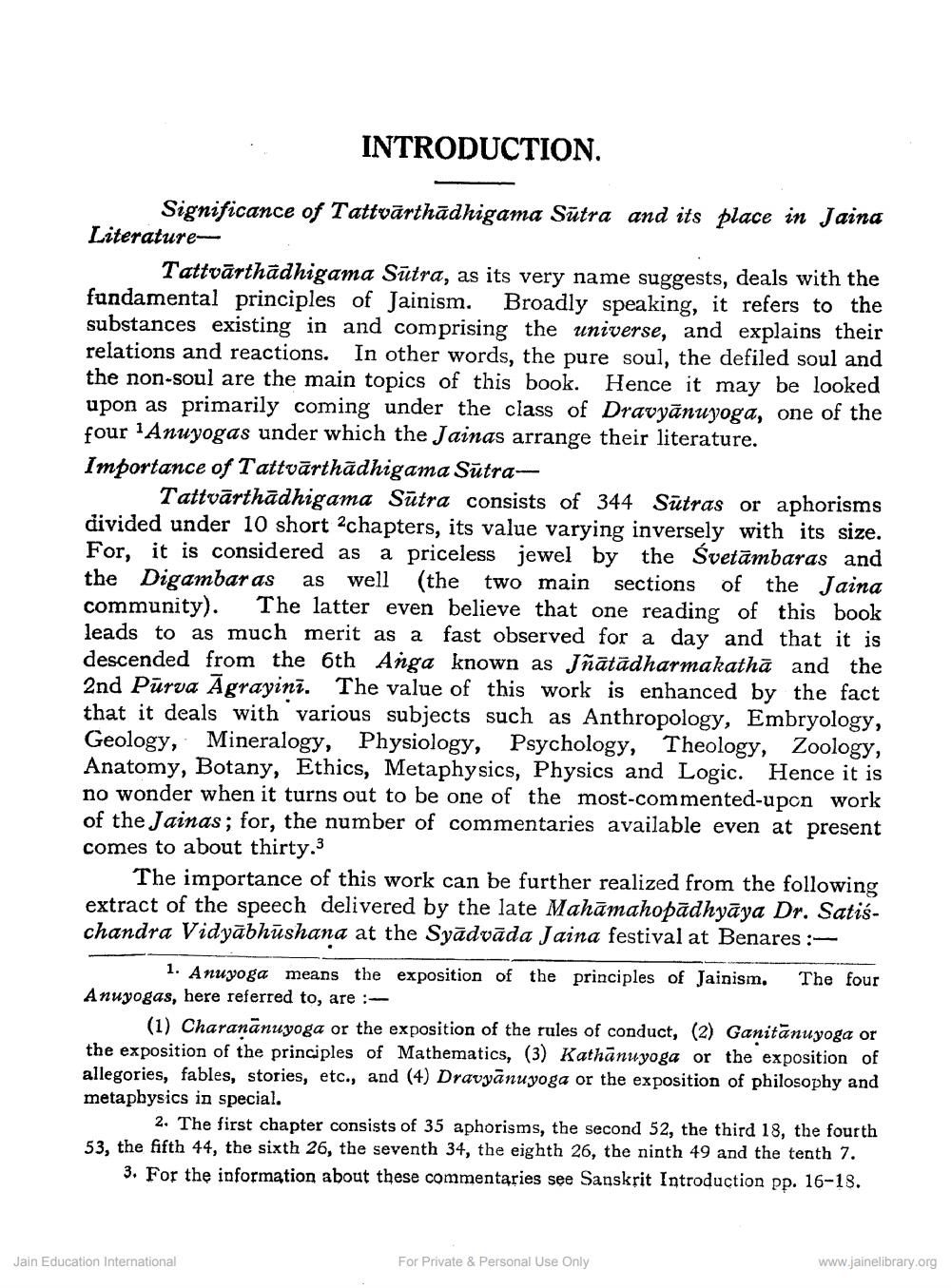________________
Significance of Tattvarthadhigama Sutra and its place in Jaina
Tattvarthädhigama Sutra, as its very name suggests, deals with the fundamental principles of Jainism. Broadly speaking, it refers to the substances existing in and comprising the universe, and explains their relations and reactions. In other words, the pure soul, the defiled soul and the non-soul are the main topics of this book. Hence it may be looked upon as primarily coming under the class of Dravyanuyoga, one of the four 1Anuyogas under which the Jainas arrange their literature.
Importance of Tattvarthadhigama Sutra
Literature
INTRODUCTION.
Tattvarthadhigama Sutra consists of 344 Sutras or aphorisms divided under 10 short 2chapters, its value varying inversely with its size. For, it is considered as a priceless jewel by the Svetambaras and the Digambar as as well (the two main sections of the Jaina community). The latter even believe that one reading of this book leads to as much merit as a fast observed for a day and that it is descended from the 6th Anga known as Jñatadharmakatha and the 2nd Purva Agrayini. The value of this work is enhanced by the fact that it deals with various subjects such as Anthropology, Embryology, Geology, Mineralogy, Physiology, Psychology, Theology, Zoology, Anatomy, Botany, Ethics, Metaphysics, Physics and Logic. Hence it is no wonder when it turns out to be one of the most-commented-upon work of the Jainas; for, the number of commentaries available even at present comes to about thirty.3
The importance of this work can be further realized from the following extract of the speech delivered by the late Mahamahopadhyaya Dr. Satischandra Vidyabhushana at the Syadvada Jaina festival at Benares :
1. Anuyoga means the exposition of the principles of Jainism. The four Anuyogas, here referred to, are :
(1) Charananuyoga or the exposition of the rules of conduct, (2) Ganitanuyoga or the exposition of the principles of Mathematics, (3) Kathanuyoga or the exposition of allegories, fables, stories, etc., and (4) Dravyanuyoga or the exposition of philosophy and metaphysics in special.
2. The first chapter consists of 35 aphorisms, the second 52, the third 18, the fourth 53, the fifth 44, the sixth 26, the seventh 34, the eighth 26, the ninth 49 and the tenth 7. 3. For the information about these commentaries see Sanskrit Introduction pp. 16-18.
Jain Education International
For Private & Personal Use Only
www.jainelibrary.org




